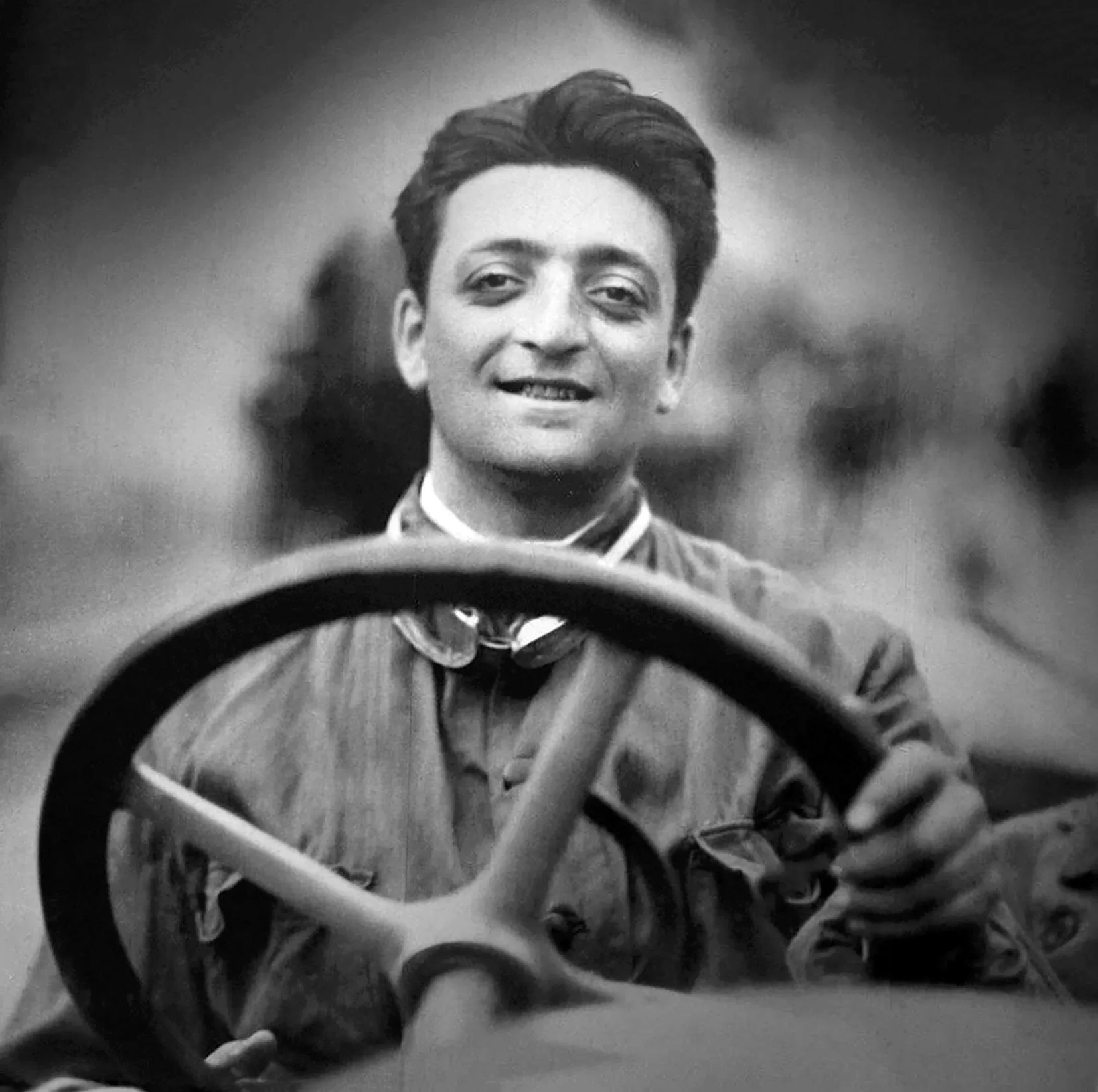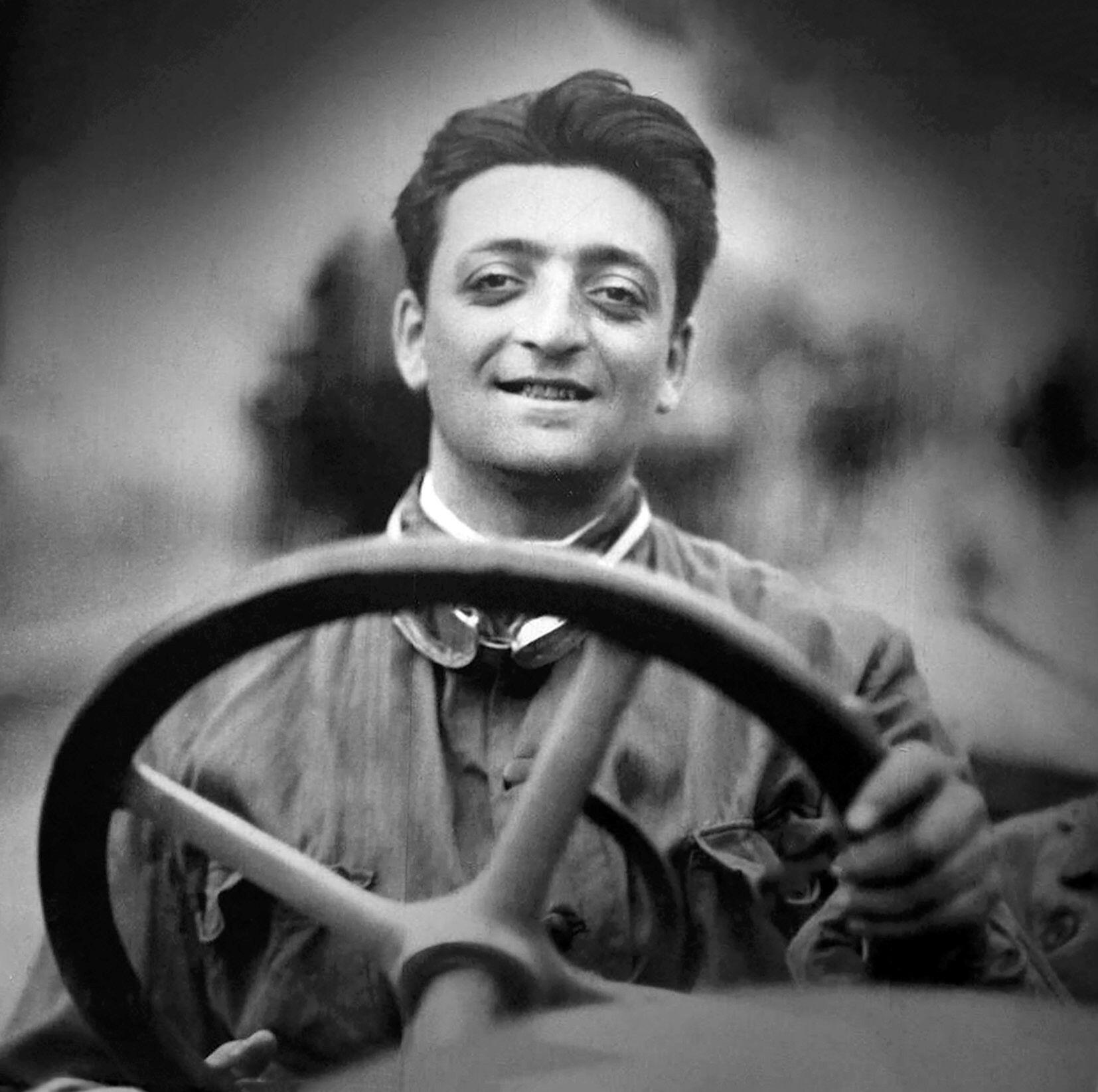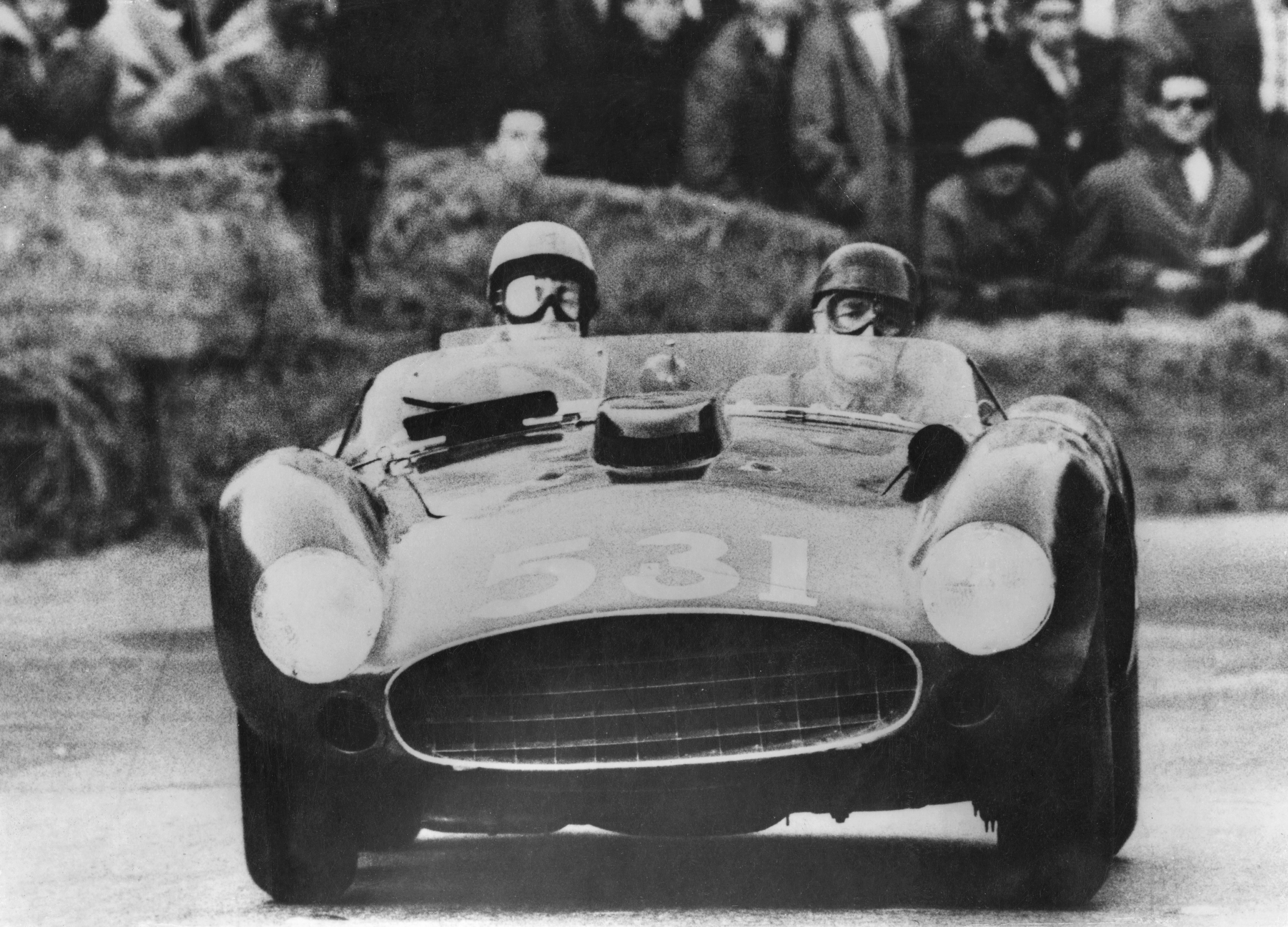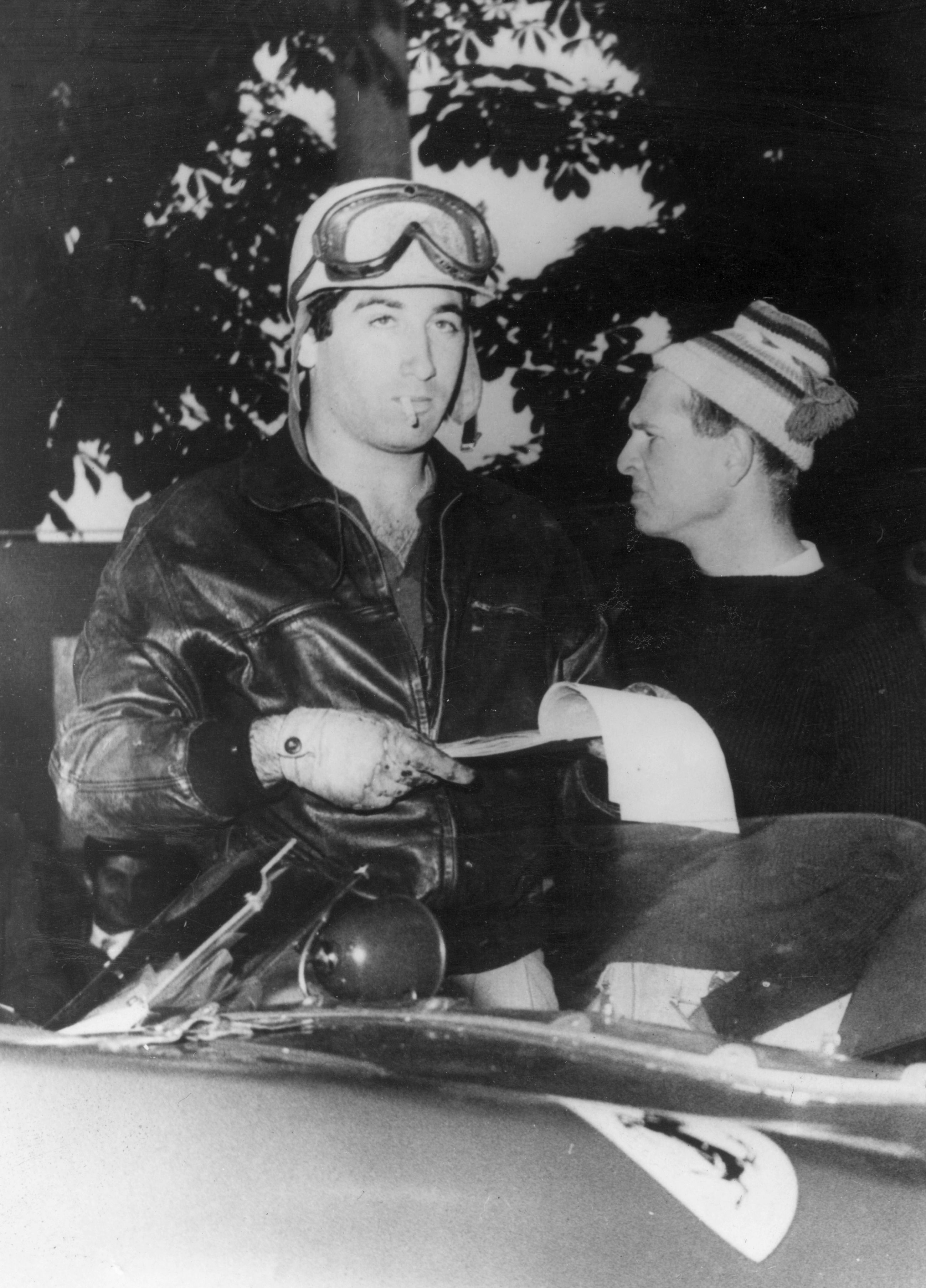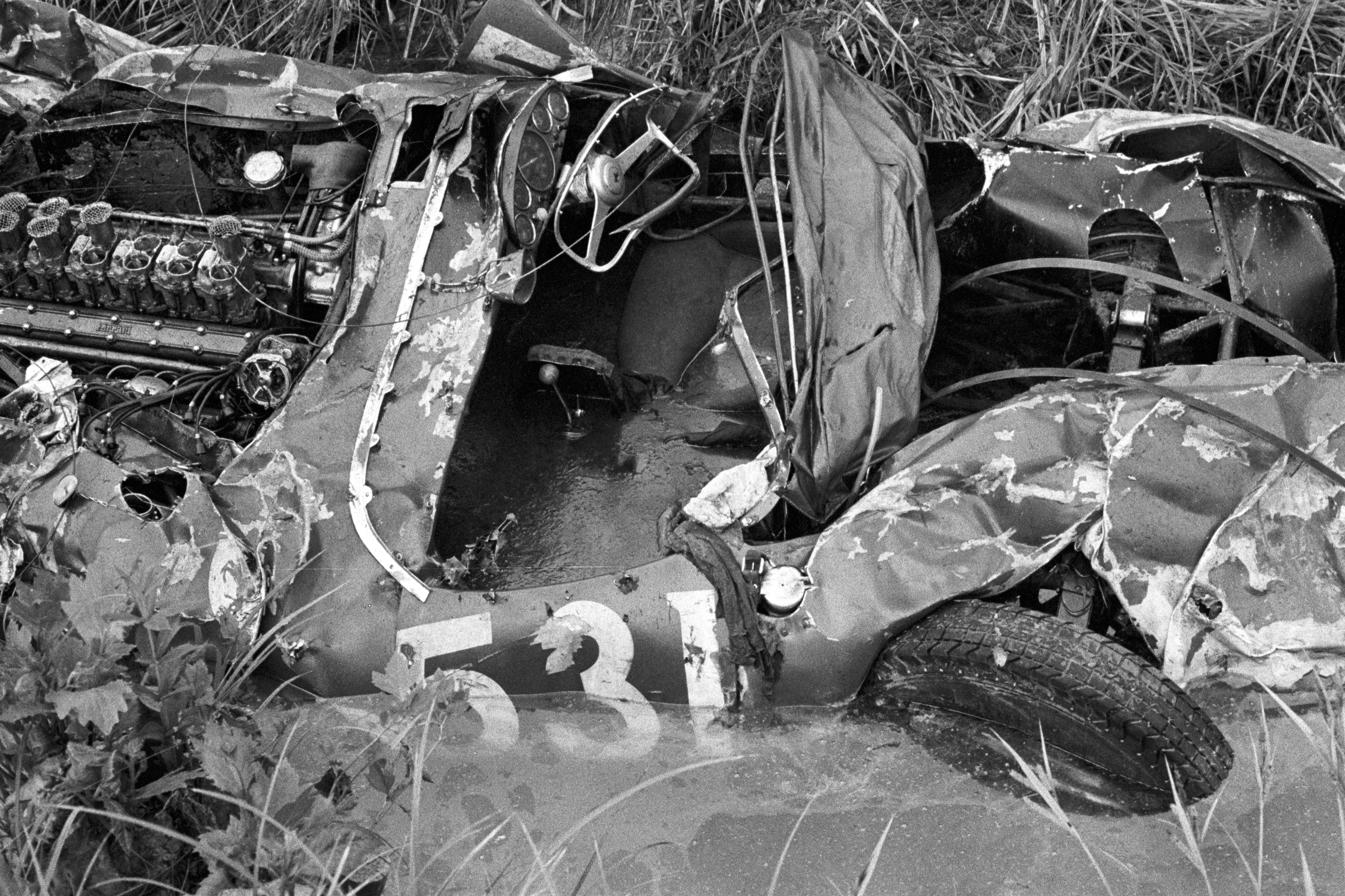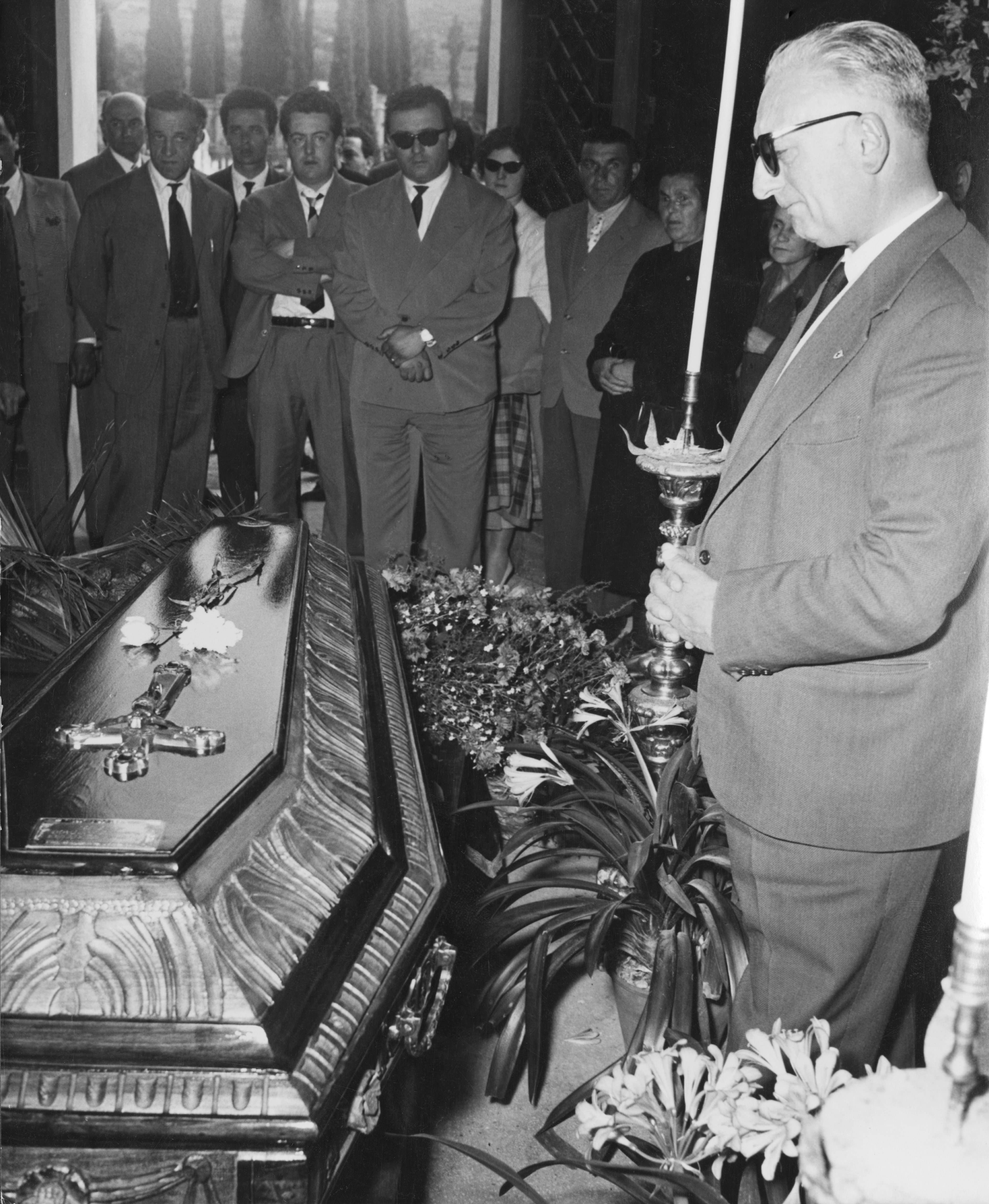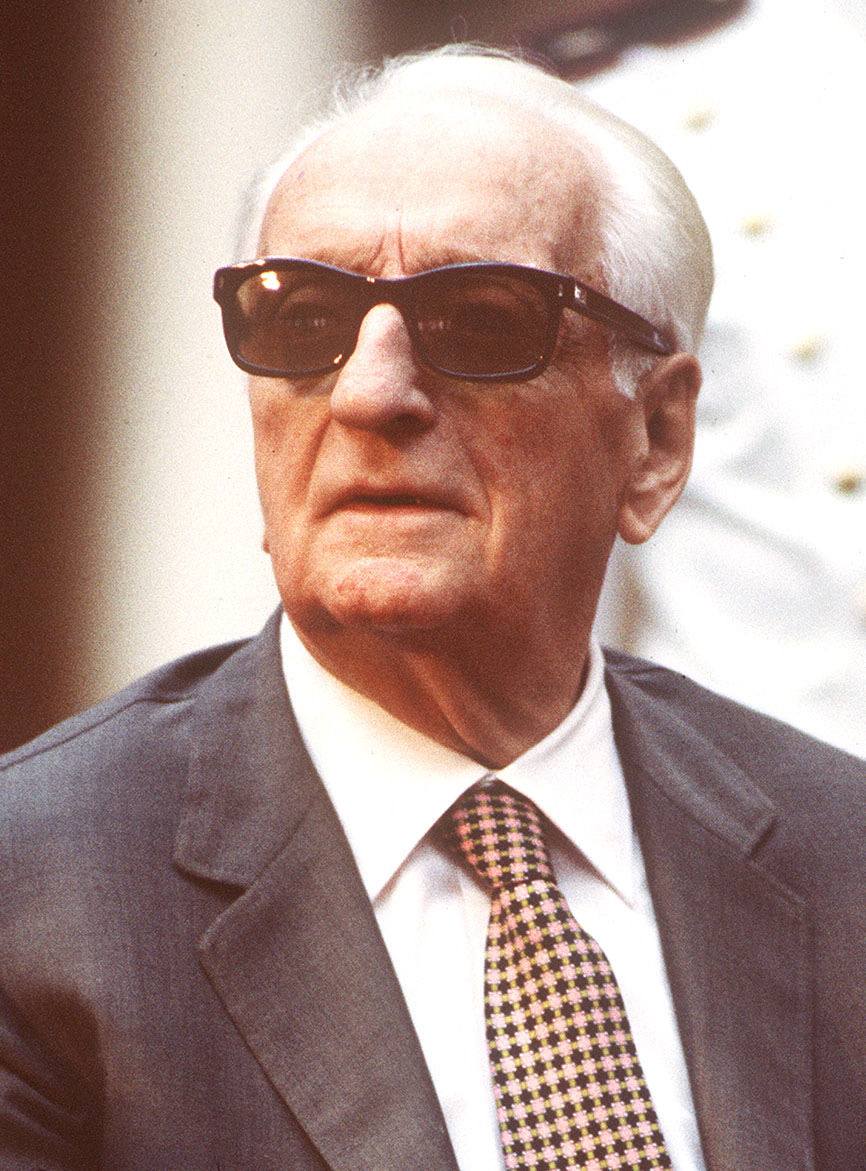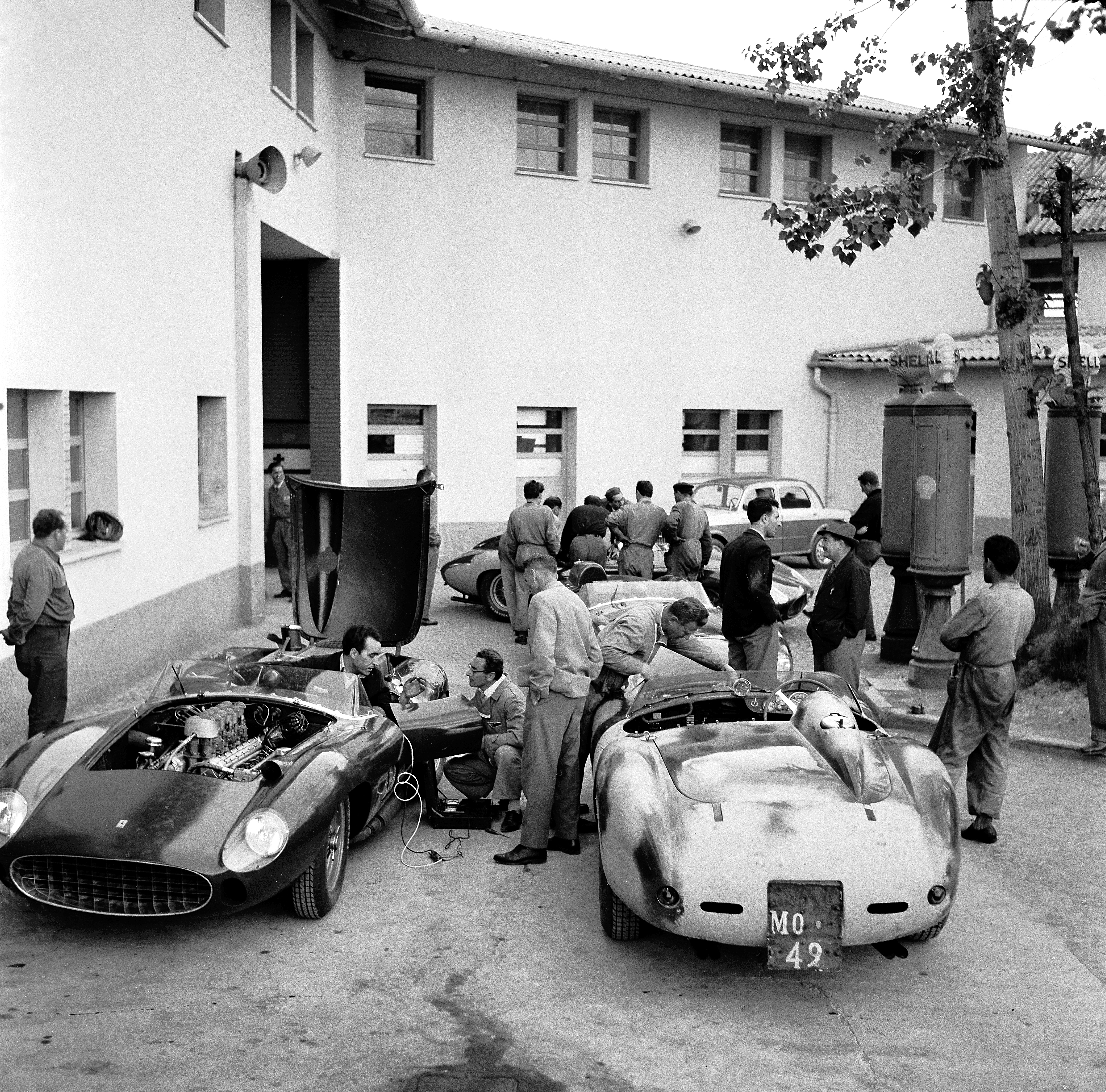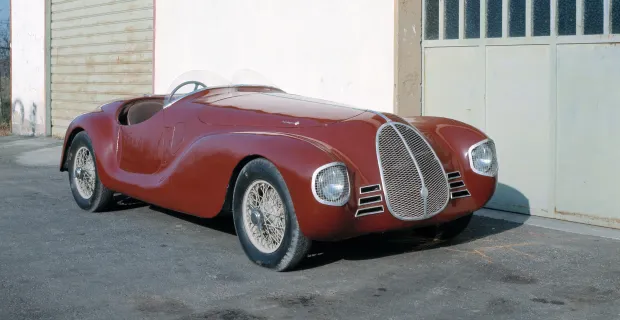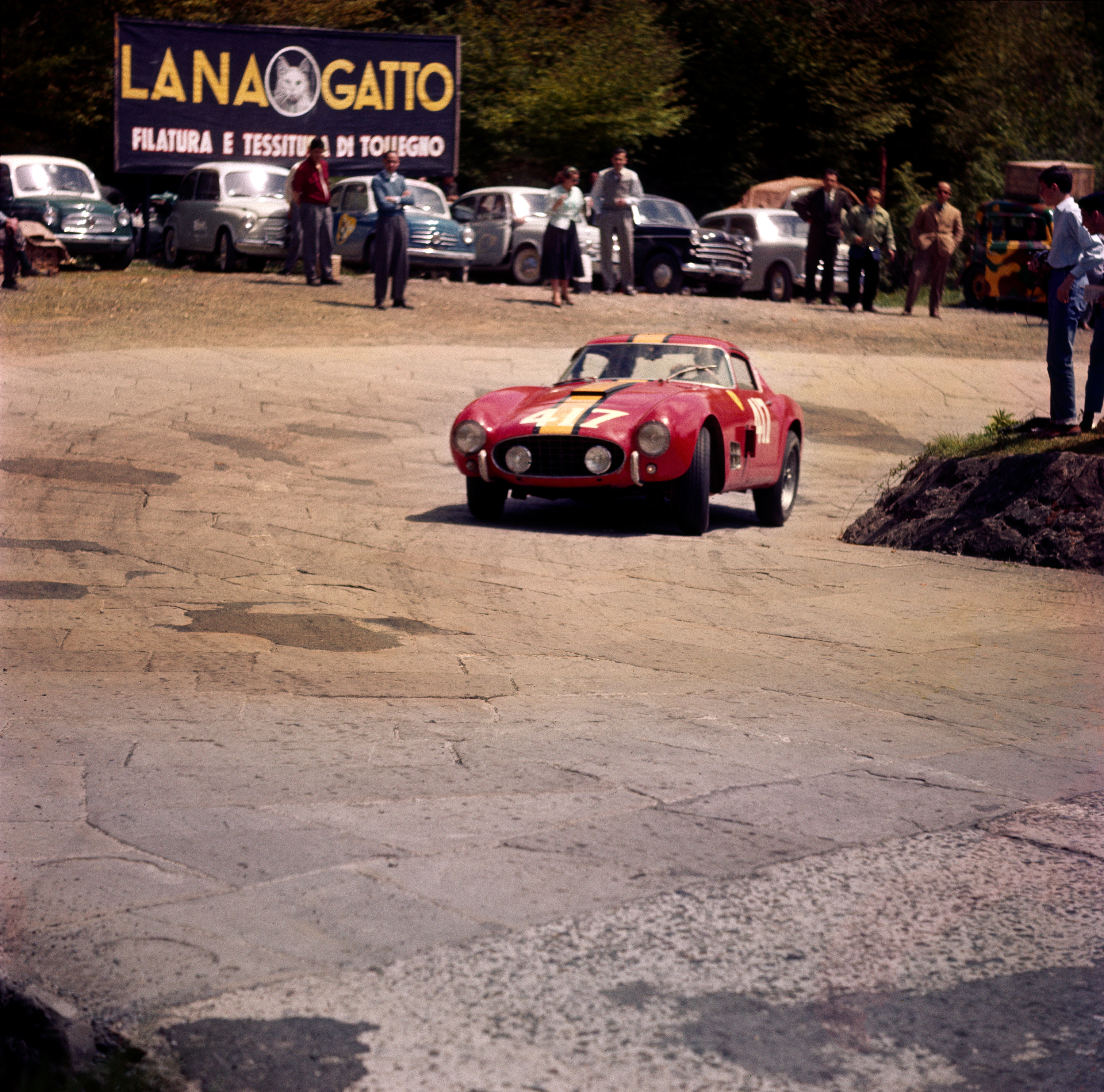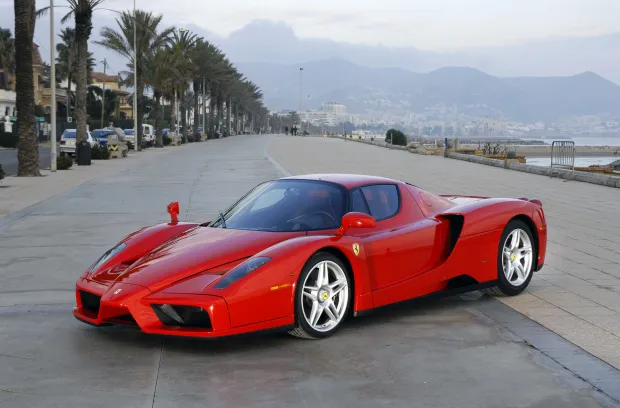The Italian luxury sports car manufacturer is the most well-known and iconic of all racing motor brands.
Its signature “prancing horse” on the front of each striking motor is a sight recognised all over the globe.
Over the past decades, Ferrari has come a long way since its start as a fledgling racecar builder.
The manufacturer has an intricate history which was also partly filled with tragedy and heartbreak.
It all started with Enzo Ferrari, the son of a metal shop owner, who survived World War One and built the first Ferrari in his name.
Enzo first tasted the thrill of fast cars and fumes at the age of ten when his dad Alfredo took him to see a race in Bologna.
From that moment on he was a devoted petrol-head, filled with the dream of getting behind the wheel himself.
But in 1957, with his company on the verge of going bust, Enzo bet that he could win the 1,000-mile Mille Miglia road race through Italy.
The notorious race was a showcase for the world’s fastest cars and most daring drivers which saw 56 people die in its 30-year history.
It was so dangerous that the dashing Spanish aristocrat Alfonso de Portago, who had flown a plane under London’s Tower Bridge for a bet, was wary about competing on the twisting roads.
And although one of Ferrari’s cars went on to win the Italian race, another was involved in a fatal collision.
With only a few miles left in the gruelling, 11-hour race, a Ferrari driven by Spanish racer Alfonso blew a tire.
Thundering down the road at 155 miles per hour, something punctured the left front tire of the Ferrari, possibly one or more reflective lane markers.
Alfonso didn’t have a chance to right the speeding vehicle, which slammed into the left curb and flipped wildly into the air.
The damaged Ferrari spun out of control and flew off the road, instantly killing Alfonso and his co-driver Edmund Nelson.
Tragically, nine spectators were also killed, with five of them being children.
The youngest of the spectators was 6-year-old Valentino Rigon, whose 9-year-old sister Virginia was also killed.
The Italian public was outraged and demanded justice for the families of the dead.
They found a convenient villain in Enzo, the controversial genius behind Scuderia Ferrari.
The Mille Miglia was never raced again, and Enzowas put on trial for manslaughter, capping one of the most difficult years of the auto icon’s life.
Even though he was eventually cleared of responsibility for the fatal crash, critics have claimed that the Ferrari boss over-stretched his team.
The late British Formula One driver Tony Brooks, who raced for Ferrari, said in a 2004 documentary: “He would expect a driver to go beyond reasonable limits.”
FAMILY AGONY
At the same time of this tragedy, Enzo was struggling to save his marriage following the death of his son and amid a long running affair with the mother of a secret love-child.
Enzo married Laura in 1923 and had a son called Dino.
Though Dino suffered from chronic health issues and kept a low profile, he was seen around the factory from time to time.
He never raced because of his health, but his father provided him with a fleet of cars that he drove around for fun.
But Dino died aged 24 in 1956 after a long battle with a severe type of muscular dystrophy.
Enzo and Laura’s relationship deteriorated after the death of Dino.
The Ferrari boss also had a son, Piero, with his mistress Lina in 1945, and kept them both in his life.
There were other short-lived affairs in the province of Modena, which Enzo rarely left.
He once said: “I am convinced that when a man tells a woman he loves her, he only means that he desires her.”
But even after his wife died in 1978, Enzo went to visit her grave every morning, which was situated alongside those of his son and parents.
Devoted Lina and Piero were by his bedside when he died.
Piero, 78, was given a ten per cent share of the Ferrari company and has been vice chairman of the firm ever since his father’s death.
He is now a billionaire thanks to massive demand for the glamorous sports cars, which have a starting price of £166,000.
Classic Ferraris are even more sought after, partly because Enzo would let them rot at the back of his factory once they had been replaced by a newer model.
‘FATHER OF RACING’
Enzo’s love for motor cars, as for so many young men in Europe, was almost taken from him by the outbreak of war in 1914.
He suffered from the serious lung condition pleurisy while working with mules as part of Italy’s mountain regiment three years into the conflict.
Discharged from the military on health grounds, Enzo set about making a name for himself as a driver at the then-fledgling sports car firm Alfa Romeo.
He won the first of 11 Grand Prix in 1923, but the death of his friend and team-mate Antonio Ascari on the track two years later left Enzo fearful of pushing his car to its limits.
The birth of his first son Dino in 1932 convinced him to transfer his talents to the safety of design and management.
Having set up his own manufacturer — Auto Avio Costruzioni — eight years later, he was soon told to make air-craft engines for Italy’s fascist ruler Benito Mussolini and his factory became a target for Allied bombers.
Not wishing to be associated with the stain of the despised regime, Enzo changed the firm’s name to Ferrari at the end of the war, and in 1947 a gleaming red 125 model rolled off the production line.
Ferrari began his career in the 1920s as a race car driver for Alfa Romeo.
But he found his true calling off the track, first as a manager of racing teams in the 1930s and then as a visionary carmaker in the 1940s.
Ferrari’s first love was racing, and he only started selling luxury sports cars to fund his racing ambitions.
By the mid-1950s, Ferrari the company had emerged as a major player in professional racing, both in the single-seat Formula 1 category and in open road races like the Mille Miglia.
